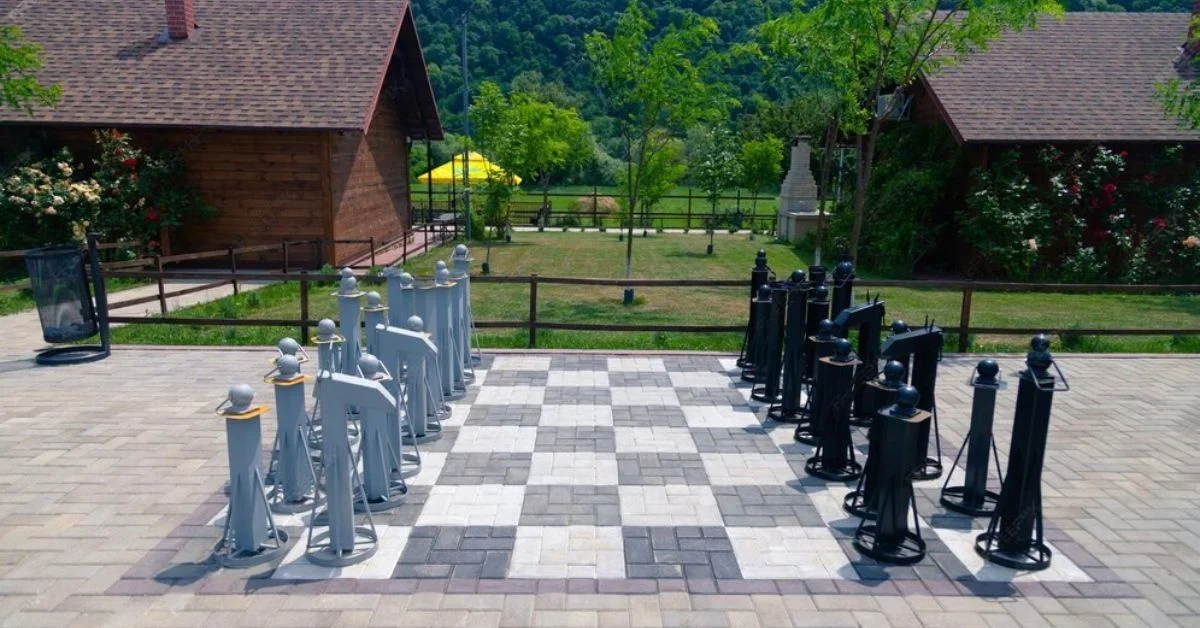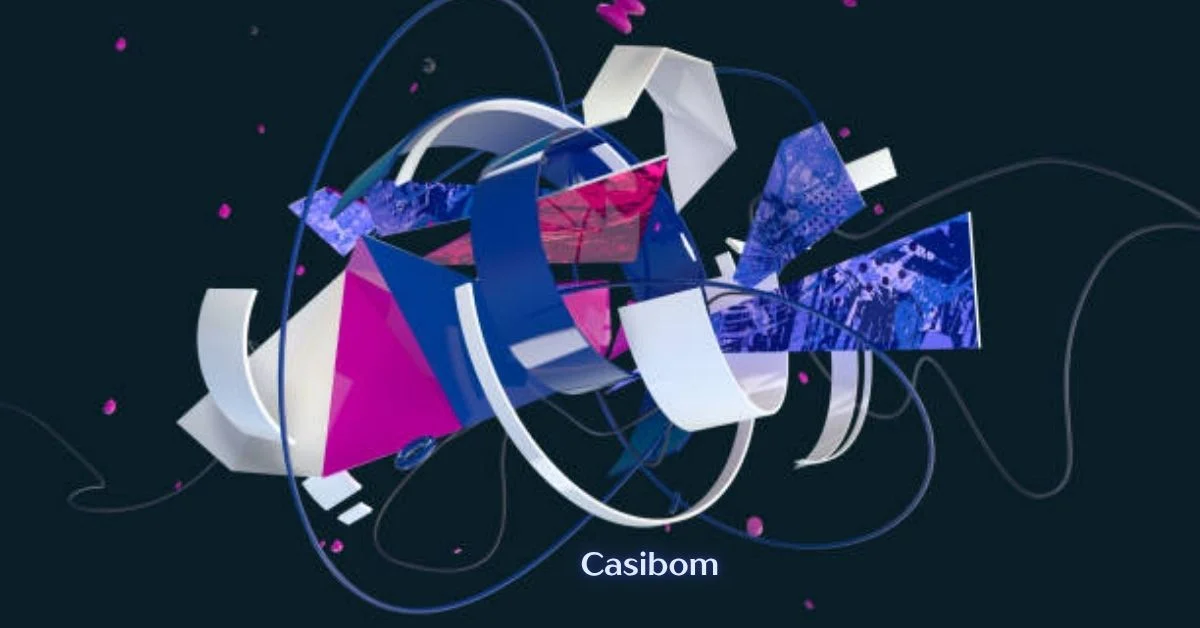TECHNOLOGY
PopAI for Students: Making Study Easier

Studying can sometimes be difficult and boring, but with PopAI, it doesn’t have to be! PopAI is a smart tool that can help students with homework, research, and study materials. It can make learning fun and easy by summarizing documents, extracting key points, and visualizing data for school projects. Let’s dive into how PopAI.Pro can help you become a better student!
Summarizing Documents
PopAI can read long documents and create a short summary for you. This means you don’t have to spend hours reading and trying to figure out what’s important. PopAI does the hard work for you! For example, if you have a 10-page history chapter to read, PopAI can quickly tell you the main points.
Extracts Key Points
When you use PopAI, it can pull out the key points from any text. This is super helpful for studying because you can focus on the important facts and ideas. Imagine having to read a science article for class. PopAI can highlight the key points, so you know exactly what you need to learn.
Visualizing Data
PopAI can turn data into colorful charts and graphs. This is great for school projects and homework because it makes your work look more professional and easier to understand. For instance, if you are doing a project on the weather, PopAI can help you create a graph showing the temperatures over a week.
Helping with Homework
PopAI can assist with many subjects by providing clear and concise information. Whether it’s math, science, history, or English, Pop AI pdf reader can help you understand your homework better. It can explain difficult concepts in a simple way, making it easier for you to learn.
Research Made Simple
Doing research can be time-consuming, but PopAI makes it faster and easier. When you need to find information on a topic, PopAI can search for reliable sources and give you a summary of what you need to know. This saves you time and helps you find accurate information quickly.
Studying Made Fun
PopAI can make your study time more effective by giving you the tools you need to understand and remember information. With summaries, key points, and visual aids, you can study smarter, not harder. This means you can have more free time to do the things you love!
Real-Life Examples
Example 1: History Homework
Imagine you have a history assignment about ancient Egypt. Instead of reading through a huge textbook, you can use PopAI to summarize the chapter. PopAI will give you the main points, like the construction of the pyramids and the role of pharaohs, in just a few sentences.
Example 2: Science Project
For a science project on plants, you need to collect data on how different plants grow in various conditions. PopAI can help you turn your data into a chart that shows which plants grew the best. This makes your project look neat and helps your classmates and teacher understand your findings.
Example 3: English Essay
If you have to write an essay on a book you read, PopAI can help by summarizing the book and pointing out the main themes and important quotes. This makes it easier for you to organize your thoughts and write a great essay.
How to Use PopAI
Using PopAI is easy! You can access it on your computer or tablet. Simply type in the text or upload the document you need help with, and PopAI will do the rest.
Tips for Using PopAI
- Be Clear: When you ask PopAI for help, be clear about what you need. For example, say “summarize this chapter” or “find key points about the solar system.”
- Review the Results: Always read through the results PopAI gives you. Make sure you understand the information and ask your teacher if you have any questions.
- Combine with Your Notes: Use PopAI along with your class notes. This will help you get a complete understanding of the topic.
Conclusion
PopAI is an amazing tool that makes studying easier and more fun. It helps you with summarizing documents, extracting key points, and visualizing data. With PopAI, you can do better on your homework, research projects, and tests. Remember, learning can be enjoyable and effective with the right tools, and PopAI is here to help you succeed. So next time you have a big project or a tough homework assignment, give PopAI a try and see how much easier studying can be!
APPS & SOFTWARE
How To Manage Employees at Scale: Workforce Management Software

Companies that maintain a clear record of employee time, attendance, and tasks may experience boosted performance and improved bottom lines. Workforce management software enables labor-intensive organizations to maximize labor efficiency, minimize compliance risks, and develop strategic insight that improves business operations. Embracing a data-driven approach to management helps companies retain talent, cut labor costs, and adhere to labor laws. Here are a few ways workforce software can help you manage employees at scale:
Improved Labor Optimization
Management software identifies and alerts management to labor issues such as overstaffing or understaffing based on forecasted workloads. Workforce management software analyses historical data and business trends to align staff schedules with anticipated demand. It factors employee availabilities, skills, and preferences to generate optimized schedules that result in better timekeeping and adherence to deadlines. Businesses may experience reduced scheduling errors, optimized workforce utilization, smoother shift planning, and improved employee satisfaction due to fair and balanced schedules. Labor optimization increases productivity and success rates as each task is assigned and complies with the company’s workflow.
Enhanced Demand Forecasting
Accurately forecasting demand for a large and dispersed workforce, including remote employees, can present significant growth and operational efficiency opportunities. Miscalculated labor requirements lead to inefficient staffing that strains the budget and interferes with performance. A workforce management system uses artificial intelligence algorithms to predict workload volume for active operation days. The forecasted data can help management make informed decisions on when to increase or scale down the workforce. The software uses repeated data patterns to forecast future requirements, helping businesses to have better budget and resource allocation planning.
Automated Scheduling
Manual schedule creation is time-consuming for a large workforce, especially when different shifts and employee skills are involved. Workforce management systems are automated and generate schedules that align with forecasted demand, employee availability, and skill sets. Such systems allow for easy updating and making changes to the schedule. A workforce management tool features workforce sharing, smart templates, and shift swapping. It will enable staff to pick up open shifts or make changes that a supervisor approves. Automated scheduling streamlines administrative tasks and promotes equitable distribution of shifts.
Improved Time Tracking and Attendance
Employee attendance and time tracking help calculate the number of hours worked, overtime, and absences. Managing data tracking manually for a large workforce can pose challenges in terms of time consumption, error risks, and complexity. Workforce management software provides a more efficient solution by automating the time-tracking process. Employees clock in and out using their devices, eliminating discrepancies or manual calculations. This feature also helps managers better understand their employees’ productivity and identify any issues that may arise.
Improved Compliance and Reporting
Compliance with labor laws and regulations is a requirement for any organization. The laws stipulate maximum working hours, minimum wage, and overtime pay. Employees are entitled to rest, meal breaks, and a set number of vacation days. A workforce software ushers in automation and standardization, promoting law adherence. The software also generates comprehensive reports on employee data. The report makes it easier for organizations to monitor compliance and identify any areas of improvement. These reports can also aid in identifying trends and patterns within the workforce, enabling organizations to make proactive changes.
Enhanced Employee Engagement
Features in a workforce management system, including newsfeeds, polls, surveys, and scheduling communications, support effective information sharing across the organization. Highly engaged employees are more productive, have lower absenteeism rates, and stay with the company longer. Workforce management tools improve employee engagement in various ways. The software allows employees to view their schedules and adjust as needed, promoting transparency and control over their work hours. It provides a platform for employees to request time off, swap shifts with colleagues, and communicate with managers. This level of autonomy and communication fosters a sense of ownership and teamwork among employees. The software can track employee performance and provide top performers, further boosting engagement levels.
Maximize Efficiency With Workforce Management Software
Effective communication improves workplace efficiency and reduces errors. Workforce management software allows for streamlined communication between employees, managers, and HR personnel. The software sends automated notifications, reminders, and updates to keep everyone on the same page. It also provides a centralized platform for all employee information, eliminating the need for multiple manual systems. Investing in workforce software may lead to significant cost savings and improve organizational success. Implement workforce software into your business processes today.
GADGETS
Choosing the Right Driveway Bollards for Your Home: Factors to Consider

In every homeowner’s journey, there are selections and decisions to make that significantly impact the safety and aesthetics of the home. One such vital choice is selecting the appropriate driveway bollards. These security structures are increasingly becoming a commonplace in residential driveways. They provide safety, deter theft, enhance aesthetic appeal, and contribute to the overall value of your home.
Key Factors to Consider
Here, we are going to dig deep into several factors you need to consider getting the right driveway bollards.
1. Material
The choice of material for your driveway bollards plays a critical part in their durability, maintenance needs, and overall look. Popular materials include steel, stainless steel, aluminium, and concrete, each with its advantages and functionality.
2. Functionality
Driveway bollards can either be decorative or functional, or both. Functional bollards are usually stronger and are designed to resist vehicle impact, while decorative bollards enhance the visual appearance of your property. Consider your priorities before making a choice.
3. Design and Aesthetic Appeal
The design of your bollards ought to blend with the overall theme of your home. A mismatch could disrupt the aesthetic balance of your property. The colours, styles, and finishes are all important elements that will help ensure your bollards are in harmony with your home’s aesthetic.
4. Size and Placement
The size of your bollards and their placement determine their effectiveness in securing your property. For maximum barrier protection, ensure the bollards are placed strategically at your driveway’s entrance and exit points.
In Conclusion
Choosing the right driveway bollards requires thoughtful consideration of the aforementioned factors. Material, functionality, design, aesthetic appeal, size, and placement all are crucial elements that should be considered. It’s also worth noting that while bollards significantly enhance security, they should not interfere with the normal functionality of your driveway. A well-chosen set of bollards can be a great asset to your home, adding both practicality and aesthetic value. So take your time, do your research, consider the factors mentioned in this article, and you’re likely to come away with bollards that are fit for purpose, durable, and pleasing to the eye.
TECHNOLOGY
Best Practices for NEMT Providers: Safety, Reliability, and Compliance

In the healthcare industry, the role of non-emergency medical transportation (NEMT) services continues to become more critical.
These vital services bridge the gap between patients and their necessary medical appointments, ensuring that lack of transportation is never a barrier to healthcare access.
While availability is the heart of effective NEMT service, its foundational pillars are safety, reliability, and compliance. Each of these elements plays a crucial role in meeting and exceeding the expectations of patients and healthcare providers alike.
This article examines these ideals and how NEMT operators can effectively reinforce them in their businesses.
Ensuring Safety in NEMT Services
Safety is essential to any transportation service, especially in NEMT. Below are several ways to guarantee safety in your business.
Ensuring Vehicle Safety
NEMT vehicles must comply with safety standards and undergo regular maintenance checks to guarantee passenger safety.
This includes the mechanical integrity of the vehicles, ensuring each one is equipped to meet patients’ needs with the essential medical and accessibility equipment.
Driver Safety Training
Safety on the road transcends basic driving skills.
NEMT drivers must undergo comprehensive training covering safe driving practices, emergency response, and the unique needs of patients transported. This training should be ongoing, ensuring drivers remain at the forefront of safety and service excellence.
Patient Safety Measures
The well-being of patients during transport is a top priority.
Implementing rigorous health and hygiene protocols is essential, especially in today’s environment. Drivers must be trained in safe patient handling techniques to prevent falls and injuries and ensure patients’ secure and comfortable journeys.
Ensuring Reliability in NEMT Services
Proving to clients that you are trustworthy by delivering on your promises is crucial to the reputation and well-being of any NEMT business. Here are several ways to ensure your services are effective and reliable.
Efficient Dispatch Systems
At the center of a reliable NEMT service is a well-designed dispatch system.
Leveraging advanced software solutions enables efficient scheduling, route optimization, and real-time tracking for timely services.
Communication Protocols
Clear, open lines of communication with patients and healthcare providers form the bedrock of reliability.
This includes confirming appointments, providing updates on arrival times, and establishing a direct channel for feedback and concerns.
Contingency Planning
Unexpected events are part of the transportation world.
Having robust contingency plans in place for vehicle breakdowns, driver unavailability, or unforeseen delays ensures that the service remains reliable, even in the face of challenges.
Upholding Compliance in NEMT Services
While they may differ depending on state or region, every NEMT provider must comply with specific regulations from various entities.
Adhering to Regulations
Compliance with local, state, and federal regulations is non-negotiable.
NEMT providers must stay informed about the regulatory landscape and ensure that all aspects of their operation, from vehicle standards to driver qualifications, meet or exceed these requirements.
Medicaid Compliance
For many NEMT providers, Medicaid is a significant source of patient referrals and funding.
Navigating the complexities of Medicaid compliance, from understanding eligibility requirements to proper billing practices, is essential for operational success and integrity.
Data Security and Privacy
Protecting patient information is not just a matter of compliance; it’s a matter of trust.
Implementing stringent data security measures and ensuring compliance with HIPAA guidelines are critical in safeguarding patient privacy and securing sensitive information.
Continuous Improvement and Quality Assurance
The commitment to excellence in NEMT services is an ongoing journey.
Regular monitoring, patient feedback mechanisms, and quality assurance audits are essential in identifying improvement areas and ensuring the highest service standards are maintained.
Conclusion
Safety, reliability, and compliance are not NEMT buzzwords. These foundational principles help build successful services.
By following these best practices, NEMT providers can ensure they offer services that are needed and valued by the patients and communities they serve. In doing so, they contribute to the broader healthcare ecosystem and stand out as providers of choice in a competitive industry.

 ENTERTAINMENT4 days ago
ENTERTAINMENT4 days agoExploring the Kristen Archives: A Treasure Trove of Erotica and More

 ENTERTAINMENT1 day ago
ENTERTAINMENT1 day agoKiss KH: The Streaming Platform Redefining Digital Engagement and Cultural Currents

 TECHNOLOGY4 months ago
TECHNOLOGY4 months agoBlog Arcy Art: Where Architecture Meets Art

 LIFESTYLE4 months ago
LIFESTYLE4 months agoThe Disciplinary Wives Club: Spanking for Love, Not Punishment

 EDUCATION1 day ago
EDUCATION1 day agoLingrohub Platform: A Complete Student Access Guide

 ENTERTAINMENT3 weeks ago
ENTERTAINMENT3 weeks agoMonkeyGG2: Your Personal Gaming Hub

 TECHNOLOGY1 day ago
TECHNOLOGY1 day agoCasibom: The Digital Alchemy Reshaping Systems, Society, and Self

 LIFESTYLE4 days ago
LIFESTYLE4 days agoWho Is Sandra Orlow?










